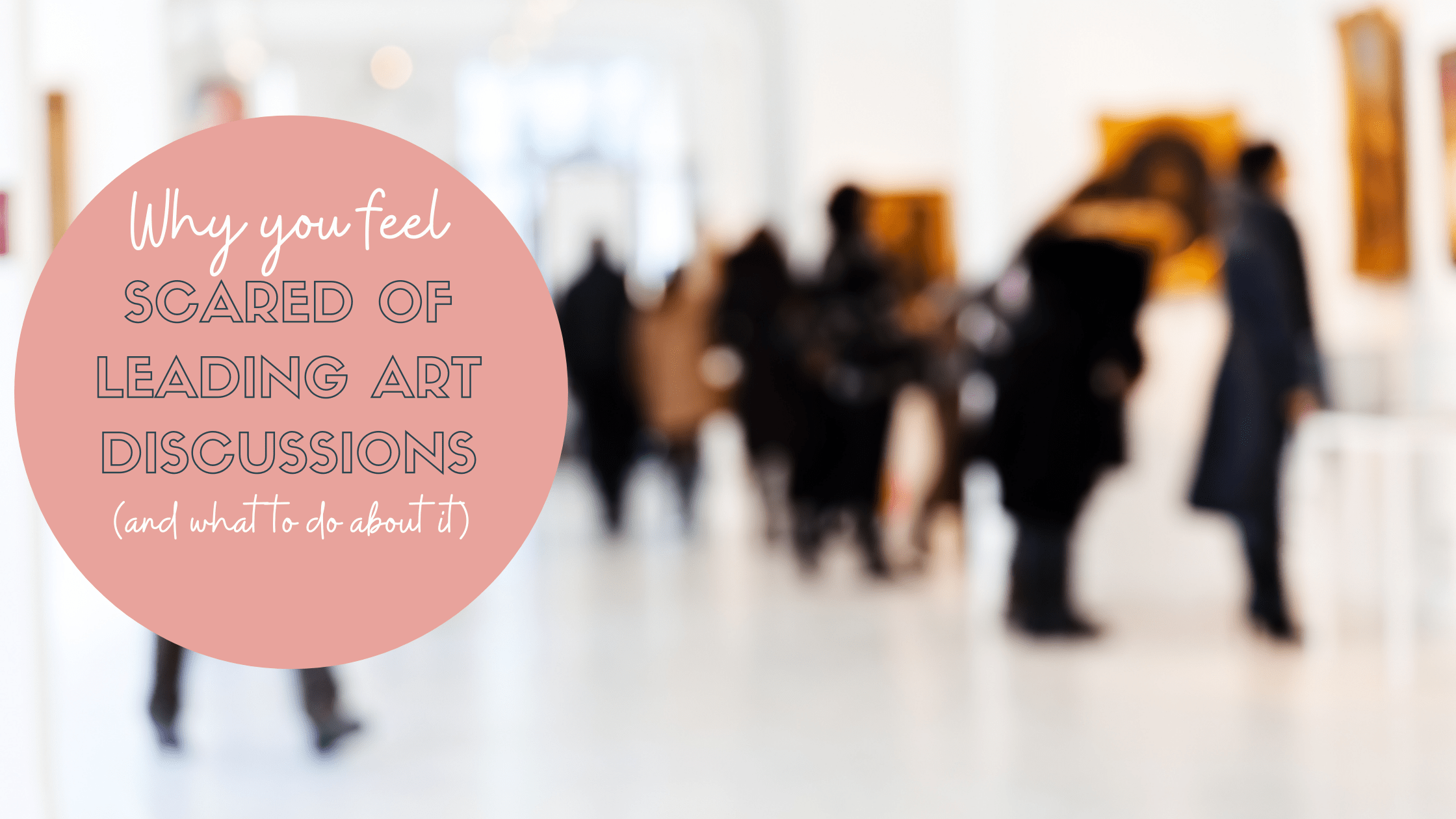Leading tours and educational programmes that are based on discussion, inquiry and interaction can be a scary business. Both for you and for your participants.
And if you’re about to take your first steps, it might seem really daunting. However, do remember that any concerns you have are perfectly normal and you’re not alone (we’ve all been there and had to start somewhere). Take it one step at a time and with time, practice and guidance, it will get easier (I promise!).
In this post, I’ve summarised the most common fears and concerns about leading discussion-based programmes that I’ve heard over the last 20 years, along with suggestions for ways to overcome them.
There’s no script to fall back on
Sometimes a script is provided by an organisation or company to help their educators and guides lead informative sessions. Perhaps your script isn’t even an official one – it’s just your detailed notes for what you want to say about each artwork or object.
BUT.
It’s time to ditch the script.
People want to be able to participate, connect and converse with you and the artwork/object you are discussing. Lectures and traditional-style walk-and-talk tours are outdated. And no-one can concentrate for more than a few minutes when someone is ‘transmitting’ information at them, no matter how good the delivery is.
Maybe you’re worried that your mind will go blank or you won’t know what to say. You’re used to having that ‘security blanket’ of a script to fall back on when you are on tour or leading educational programmes in museums and heritage sites.
If you memorise what you want to say or repeat words from a script, all this does is make your delivery sound impersonal (and in some cases, robotic). There is also nothing worse than being in the same spot, saying the same thing at the same time.
So, it’s time to rethink your role. Think of yourself as a ‘guide-on-the-side’ rather than the ‘sage-on-the-stage’.
It can be difficult to change to a new way of working but stick with it and the rewards are plentiful.
The golden rule with any discussion-based programme is practice, practice, practice. Learn the organisation and order of your session. Prepare responses to anticipated questions. Try to think like that one person who always tries to ask challenging questions to the facilitator (i.e. you!).
Familiarity brings confidence and practice will help you to deliver the session in a natural and flexible way. Yes, you will feel naked without your script the first time you lead a session that is more discussion-based than walk-and-talk, but with practice it will get easier and it will be more rewarding.
Where do I share my knowledge?
There is a common misconception that leading dialogue-based or inquiry-led sessions about art and artefacts prevents you from adequately sharing your knowledge. That your group will somehow miss out from receiving the information you can provide for them.Not true. You can create meaningful discussion-based programmes with and without information. If your programme is one where participants expect you to share appropriate knowledge, think about how and when you share it. Any information should be shared in small amounts throughout the discussion. When you are about to start sharing something, consider the following questions:
Does your expert art historical knowledge guarantee a memorable or rewarding experience for your visitors or could it actually be detracting from their own personal insights?
Does your information provide a jumping-off point for group dialogue or actually shut down new insights from the participants?
Any information you share should be there to further the discussion. Learn how to use the knowledge you have as a tool to create curiosity and engagement. Another way of thinking about it, is to imagine yourself as the orchestrator or facilitator of the discussion. You are helping participants to discover information for themselves. This is not about providing content and facts. Don’t forget that you are the ‘guide-on-the-side’ rather than the ‘sage-on-the-stage’. For more information on how to share your knowledge strategically and productively, see this post.
Losing control – not knowing where it will go
Maybe one of the biggest fears about leading this type of programmes is that once you hand over the reins to the participants, you will no longer be able to control the outcome of the session.
It’s true, you can’t predict everything during a discussion-based session, but you can make a plan so that you have an idea of where it might go. A structure is important because you want the discussion to be a rounded whole rather than a loose muddle of open-ended questions. So, plan your session to have an introduction, main body and a conclusion. If you are working in-person and visiting several artworks or objects, have a plan for each stop. Make sure that your discussion starts with observation, moves on to some form of interpretation and then has a satisfying conclusion. You can use thinking routines to help .
